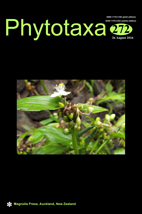Abstract
Isoetes serracarajensis and I. cangae, two new species from northern Brazil, are described, illustrated, and compared to similar species. Isoetes serracarajensis can be distinguished from other species by a set of characters including triangular to linear microphylls, a reniform-orbicular labium, a rudimentary velum covering up to 1/5 of the sporangial surface, dark brown to red-brown sporangia and verrucate megaspores (verrucae type 1). Isoetes cangae presents large microphylls, a reniform-orbicular labium, a rudimentary velum covering only up to 1/4 of the sporangium surface, hyaline sporangia and verrucate (verrucae type 2) to tuberculate megaspores (tubercles type 3). Based on the IUCN criteria, we suggest that Isoetes serracarajensis should be classified as vulnerable (VU) and Isoetes cangae included as critically endangered (CR).

